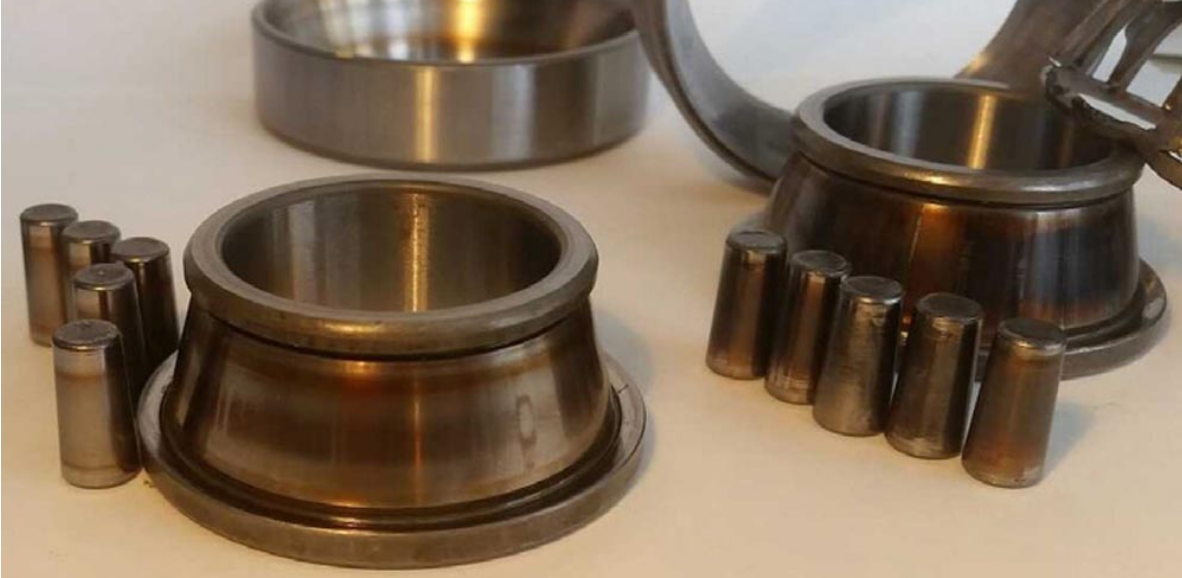Different bearing catalogs have their own thermal speed rating formulas.

Inner ring or shaft washer rotational speed at which equilibrium is reached between the heat generated by the friction in the bearing and the heat flow emitted through the bearing seating (shaft and housing) under the reference conditions
Note 1 to entry: The thermal speed rating is one among various criteria which permit comparison of the different rolling bearing types and sizes with regard to their suitability for operation at high speed.
Note 2 to entry: Mechanical and kinematic criteria which could lead to further speed limitations are not taken into account by the thermal speed rating. (ISO 15312:2018(E), p2)
Literature from Schaeffler can be interpreted to have a different meaning, referring to the thermal speed rating as an ancillary value to the thermally safe operating speed, which is defined in DIN 732:2010.
The thermal speed rating nθr is used as an ancillary value when calculating the thermally safe operating speed nθ. This is the speed at which, under defined reference conditions, a bearing operating temperature of +70°C is achieved.
The thermal speed rating is not a speed limit for the application of a bearing. It is primarily for the purpose of comparing the speed suitability of different bearing types under defined reference conditions.
A speed limit taking account of the thermal balance can be calculated using the thermally safe operating speed. [medias.schaeffler.us/en/speeds]
As I am going through these standards and bearing manufacturers’ literature, I am finding different interpretations—or definitions—or both—between different sources. For instance, if you refer to the online catalog for Schaeffler’s standard 6205 ball bearing; Limiting Speed: 19,600 rpm. Reference Speed: 14,400 rpm. Where SKF’s similar 6205: Limiting Speed: 18,000 rpm, Reference Speed 28,000 rpm. Recall the limiting speed is that mechanical rating we discussed previously (which are reasonably close); however, it is obvious they are not referring to the same reference speed. Interestingly, SKF makes no definite statement about DIN 732 where Schaeffler does. I suspect these two standards play into part of this disconnect.
The thermal speed rating is not a speed limit for the application of a bearing. It is primarily for the purpose of comparing the speed suitability of different bearing types under defined reference conditions.
If you are sufficiency confused, you are not alone. Let’s just jump into some calculations and see if we can figure this mess out. I will stick with the 6205 (25x52x15 mm) as the reference for 15312.
To get started, there are some reference conditions to note.
Operating temperature, or Reference temperature θr = 70°C
Ambient or external Reference temperature θAr = 20°C
The applied load P1r is five percent of the static load rating Cor. The SKF Cor is 7.8 kN. P1r: 0.05 x 7.8 = 390 N
A mineral oil without EP additives having the following kinematic viscosity vr 12 mm2/s at θr = 70°C:
Oil bath lubrication with an oil level up to the center of the rolling element in the lowest position.
Size up to 1,000 mm bore
Internal radial clearance N
No contact seals
Ok, so this is the thermal speed rating which is looking similar to Schaeffler’s Reference Speed of 14,400 rpm (probably within rounding error) but nowhere close to SKF’s 28,000 rpm reference speed. By this definition, this is the speed that would get you to 70⁰C from room temperature with no external heat with a very light load running in an oil bath. Recalling a line from earlier: The thermal speed rating is not a speed limit for the application of a bearing. It is primarily for the purpose of comparing the speed suitability of different bearing types under defined reference conditions.
Reference conditions are needed to determine the thermal speed rating for bearings.
We are going to have to leave this here for the next blog where we go into the DIN rating and compare several different suppliers limiting and reference speeds. The search for the true load rating is turning into quite the search, but we will get there!
1.The news above mentioned with detailed source are from internet.We are trying our best to assure they are accurate ,timely and safe so as to let bearing users and sellers read more related info.However, it doesn't mean we agree with any point of view referred in above contents and we are not responsible for the authenticity. If you want to publish the news,please note the source and you will be legally responsible for the news published.
2.All news edited and translated by us are specially noted the source"CBCC".
3.For investors,please be cautious for all news.We don't bear any damage brought by late and inaccurate news.
4.If the news we published involves copyright of yours,just let us know.
Next Ball Bearing Thermal Speed Rating
BRIEF INTRODUCTION
Cnbearing is the No.1 bearing inquiry system and information service in China, dedicated to helping all bearing users and sellers throughout the world.
Cnbearing is supported by China National Bearing Industry Association, whose operation online is charged by China Bearing Unisun Tech. Co., Ltd.
China Bearing Unisun Tech. Co., Ltd owns all the rights. Since 2000, over 3,000 companies have been registered and enjoyed the company' s complete skillful service, which ranking many aspects in bearing industry at home and abroad with the most authority practical devices in China.


